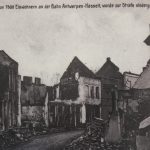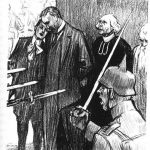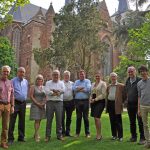Past and present
Aarschot is one of the seven martyr cities that suffered a great deal during the invasion of Belgium at the beginning of the Great War, before that war became entrenched in Flanders Fields. The German troops arrived in Aarschot two weeks after they invaded Belgium and one week before they would set the city of Leuven on fire, including the University Library. The damage toll for Aarschot was 480 homes destroyed, 156 citizens killed and 300 prisoners transported by train to Sennelagerkampf.
The Church of Our Lady and the city of Aarschot has welcomed a Peace Carillon. This instrument consists of 51 new heavy-profile bronze bells, symbolizing the number of countries that had troops in Flanders during the First World War. Parts of old artillery shells from World War I have been melted down for use in the casting of the bronze bells, as an important symbol for peace and reconciliation. The carillon was inaugurated on August 19, 2018, the memorial day of the Aarschot tragedy and was a tribute and memorial to the victims.
The idea for a new carillon was proposed by the Rev. Huub Gerits, dean of the Aarschot Church of Our Lady. He was surprised that this beautiful church did not house a carillon, like those in other Flemish cities. As Percival Price wrote, “A church tower without bells is like a body without a soul”; Huub had a similar expression: “A city without a carillon is just a small village”.
Facts and figures
| Number of bells | 51 |
| Total weight of the bells | t.b.d. |
| Weight of the bourdon | t.b.d. |
| Pitch of bourdon | E1 flat, connected to Bb in the keyboard |
| Bell founder | t.b.d. |
| Manual playing system | mechanical baton-type keyboard |
| Automatic playing system | mechanical, MIDI-driven with electromagnetichammers |
| Carillonneur | t.b.d. |
| Regular recitals | t.b.d |
| Summer concerts | t.b.d |
| Accessibility of the tower | by appointment |
Significant inscription
Never War Again
(inscribed in 50 languages on bell No 4)



